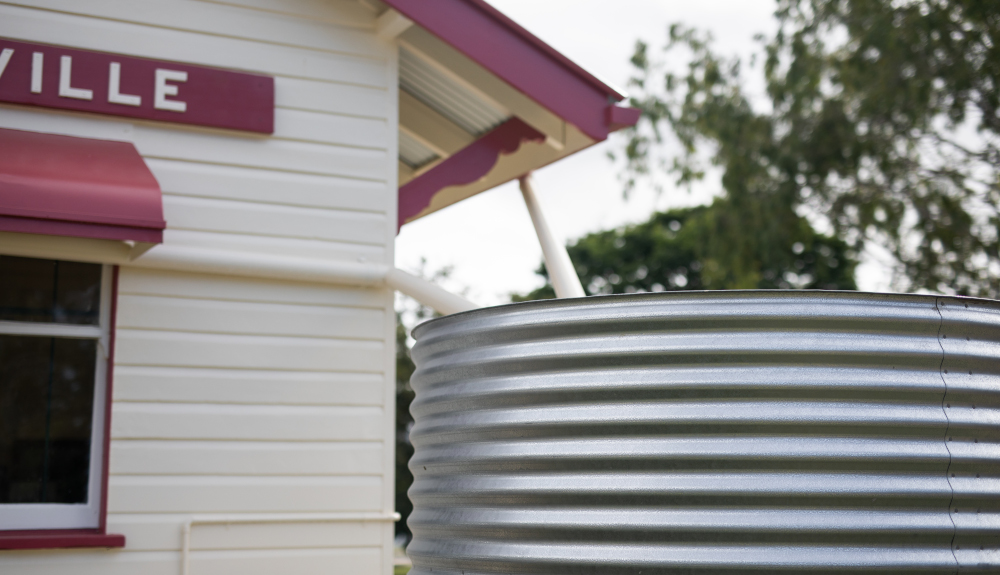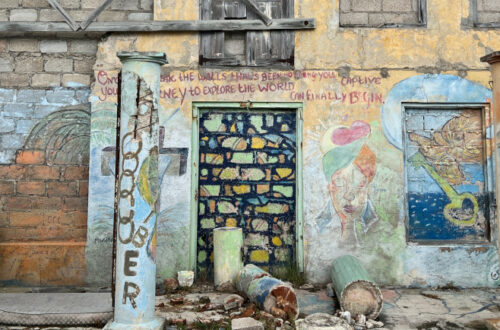
The Role of Rainwater Harvesting in South Africa’s Drought-Prone Regions
As climate change continues to reshape weather patterns across the globe, South Africa has found itself increasingly vulnerable to drought and water scarcity. For rural communities already struggling with access to safe, consistent water sources, these environmental shifts are not distant threats, they are daily realities. Amid this uncertainty, a centuries-old practice is gaining new relevance, rainwater harvesting.
Organisations like The Mvula Trust have recognised that resilience starts with local solutions. By equipping communities with the tools and knowledge to harvest rainwater, they are not just improving access, they are empowering self-sufficiency, improving health outcomes, and strengthening climate resilience. In 2025, rainwater harvesting is no longer just a backup plan, it is an essential part of rural infrastructure.
South Africa is ranked as one of the 30 driest countries in the world, receiving an average annual rainfall of only 450mm, well below the global average of 860mm. Provinces like the Eastern Cape, Northern Cape, and parts of KwaZulu-Natal have been especially hard hit by recurring droughts over the past decade. Water supply in rural areas is often erratic, with many households relying on boreholes, rivers, or water tankers, all of which are vulnerable to seasonal variability and government service disruptions.
In 2024, the Department of Water and Sanitation (DWS) reported that over 5.2 million South Africans still lack reliable access to potable water, the majority of them living in rural or peri-urban areas. These statistics are not just numbers, they represent families walking kilometres to collect water, children missing school due to waterborne illnesses, and small farmers unable to irrigate crops or sustain livestock.
Rainwater harvesting offers a simple, scalable, and effective solution to this persistent crisis.
How Rainwater Harvesting Works, Tanks, Gutters, and Filters Explained
At its core, rainwater harvesting involves the collection and storage of rainwater from rooftops or other surfaces, typically using gutters that channel the water into large storage tanks. These tanks can be above or below ground and range in size from 500 to 10,000 litres depending on household or community needs.
Basic components include:
- Gutter systems installed along rooftops to catch runoff.
- Downpipes and filters to guide water and remove debris.
- Storage tanks that are UV-resistant and durable, often plastic or concrete.
- First-flush diverters to discard the first few litres of rain (which may contain contaminants from the roof surface).
In more advanced community or school systems, rainwater may be treated with basic filtration and chlorination to ensure it is safe for drinking and cooking. However, even untreated, harvested rainwater can dramatically improve water availability for sanitation, cleaning, and gardening.
Case Studies, Communities Thriving with New Systems in 2025
Across South Africa, rural communities are already reaping the benefits of rainwater harvesting, thanks in large part to community-led initiatives facilitated by The Mvula Trust.
Lusikisiki, Eastern Cape
In 2024, Mvula partnered with a local cooperative in Lusikisiki to install 120 household rainwater harvesting systems, each with 5,000-litre tanks. Training workshops taught community members how to maintain the systems and use the water for hygiene, cooking, and food gardens. Within six months, local clinic visits for diarrhoeal disease dropped by 36%, and residents reported an average saving of R120 per household per month on water-related expenses.
Rural Schools in KwaZulu-Natal
At the Mthashana School, a joint project between Mvula and the Department of Basic Education in 2025 installed large-scale harvesting systems to supply toilets and handwashing stations. The project included learner-led “Water Clubs” that monitor tank levels and promote water-saving habits. This has resulted in improved school attendance and created an inspiring model for other schools in the district.
Youth Engagement in Water Projects
2025 has seen a sharp rise in youth engagement in water and sanitation initiatives, and rainwater harvesting is no exception. Through school clubs, community workshops, and public employment programmes, young people are learning about environmental stewardship and gaining valuable skills.
In Limpopo, Mvula’s Youth Water Champions project trained 40 youth participants in rainwater system installation and maintenance. Several graduates have since started small plumbing and construction businesses in their villages, turning climate solutions into livelihood opportunities.
Youth involvement also plays a key role in changing household behaviour, as younger members often become knowledge carriers and early adopters of new technologies within their families.
Bridging Traditional Knowledge and Modern Engineering
 Interestingly, rainwater harvesting is not new to South Africa. Many indigenous and rural communities have long-standing practices of capturing and storing rainwater, especially in arid regions. What Mvula and similar organisations have done is to enhance and modernise these practices with safe, efficient materials and community training.
Interestingly, rainwater harvesting is not new to South Africa. Many indigenous and rural communities have long-standing practices of capturing and storing rainwater, especially in arid regions. What Mvula and similar organisations have done is to enhance and modernise these practices with safe, efficient materials and community training.
This fusion of traditional knowledge with practical engineering fosters cultural relevance and trust, making communities more willing to adopt and maintain the systems.
Moreover, local artisans and builders are employed to install the systems, keeping economic benefits within the community and strengthening local supply chains.
The success of rainwater harvesting projects also depends on collaborative partnerships. Mvula Trust works closely with:
- Department of Water and Sanitation (DWS) for policy alignment.
- Department of Basic Education (DBE) for school-based systems.
- Municipalities for integration with local development plans.
- NGOs and donors who provide funding, materials, and monitoring support.
One breakthrough in 2025 has been the introduction of municipal rebate programmes, where households that install certified systems can receive small financial incentives or discounts on other municipal services.
This signals a shift in government thinking, viewing communities not as passive recipients but as co-creators in water security.
Water is life, but in much of rural South Africa, access to clean water remains an ongoing struggle. Rainwater harvesting doesn’t solve every challenge, but it offers a practical, empowering, and environmentally sustainable step forward.
Organisations like The Mvula Trust are proving that resilience starts with simplicity, community trust, and the belief that local people hold the answers to their own challenges. As climate change accelerates and centralised water systems face strain, decentralised solutions like rainwater harvesting will become not just helpful, but essential.
In the droplets captured from rooftops and stored in backyard tanks lies something far greater than hydration, the dignity of self-reliance and the foundation of a sustainable future.




